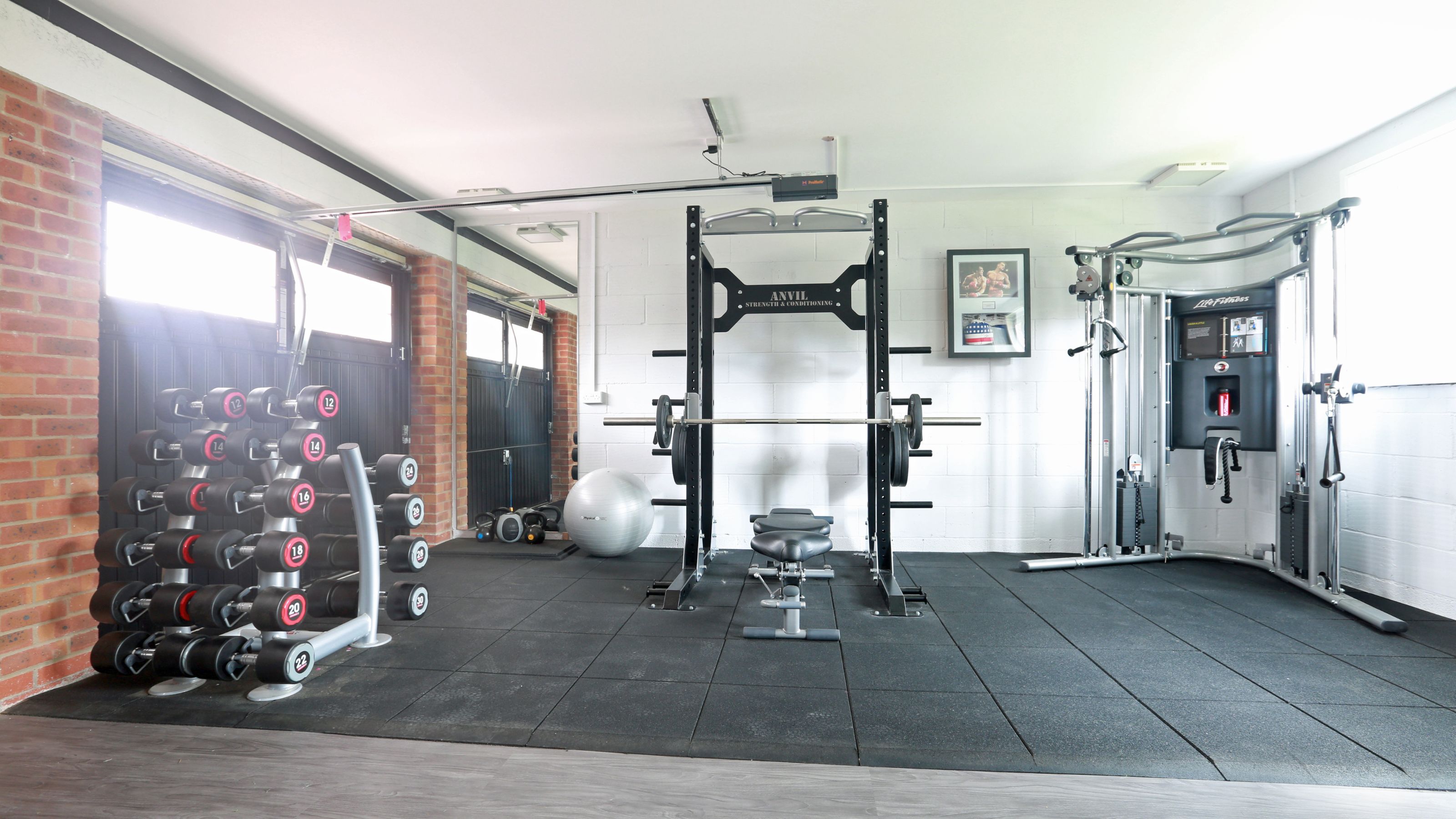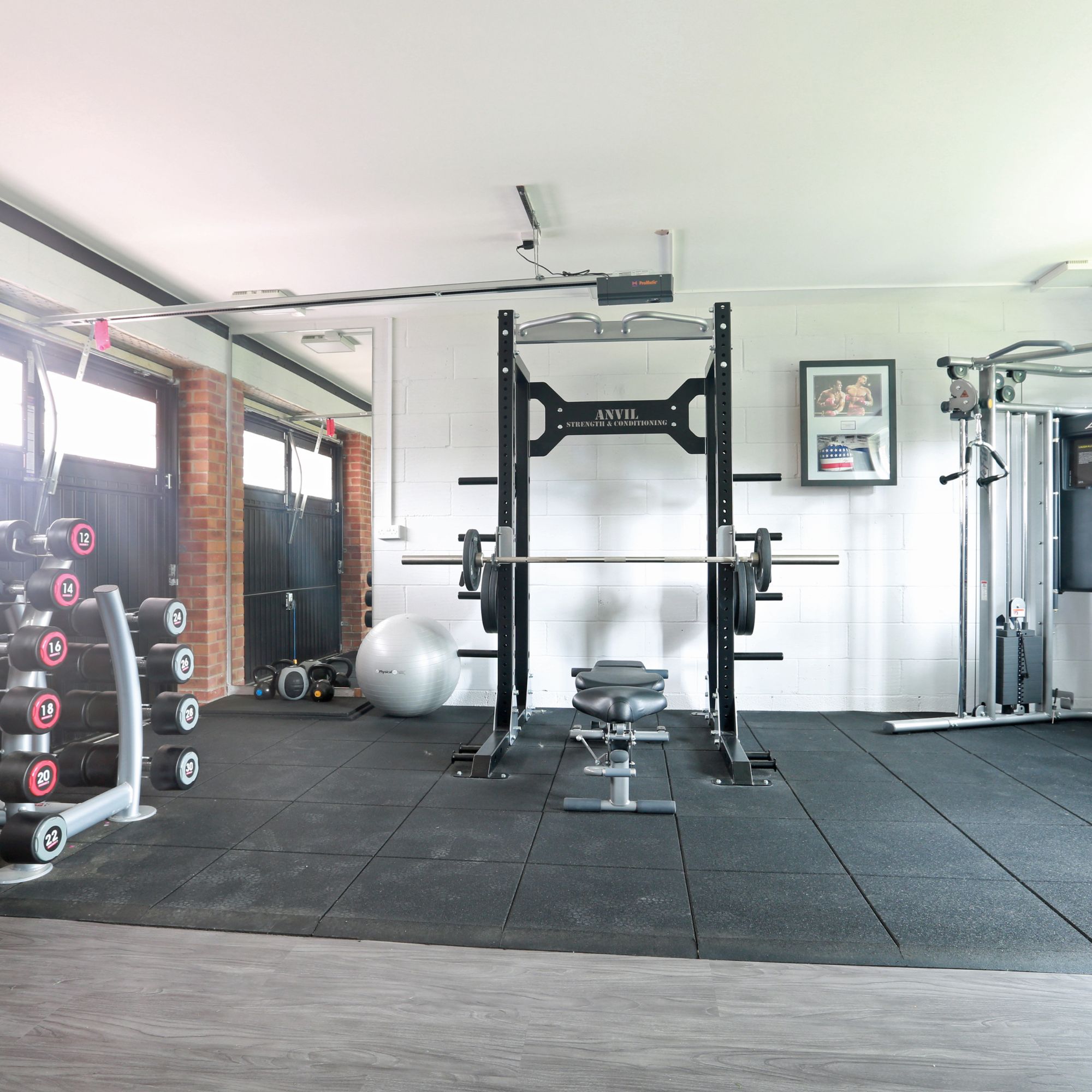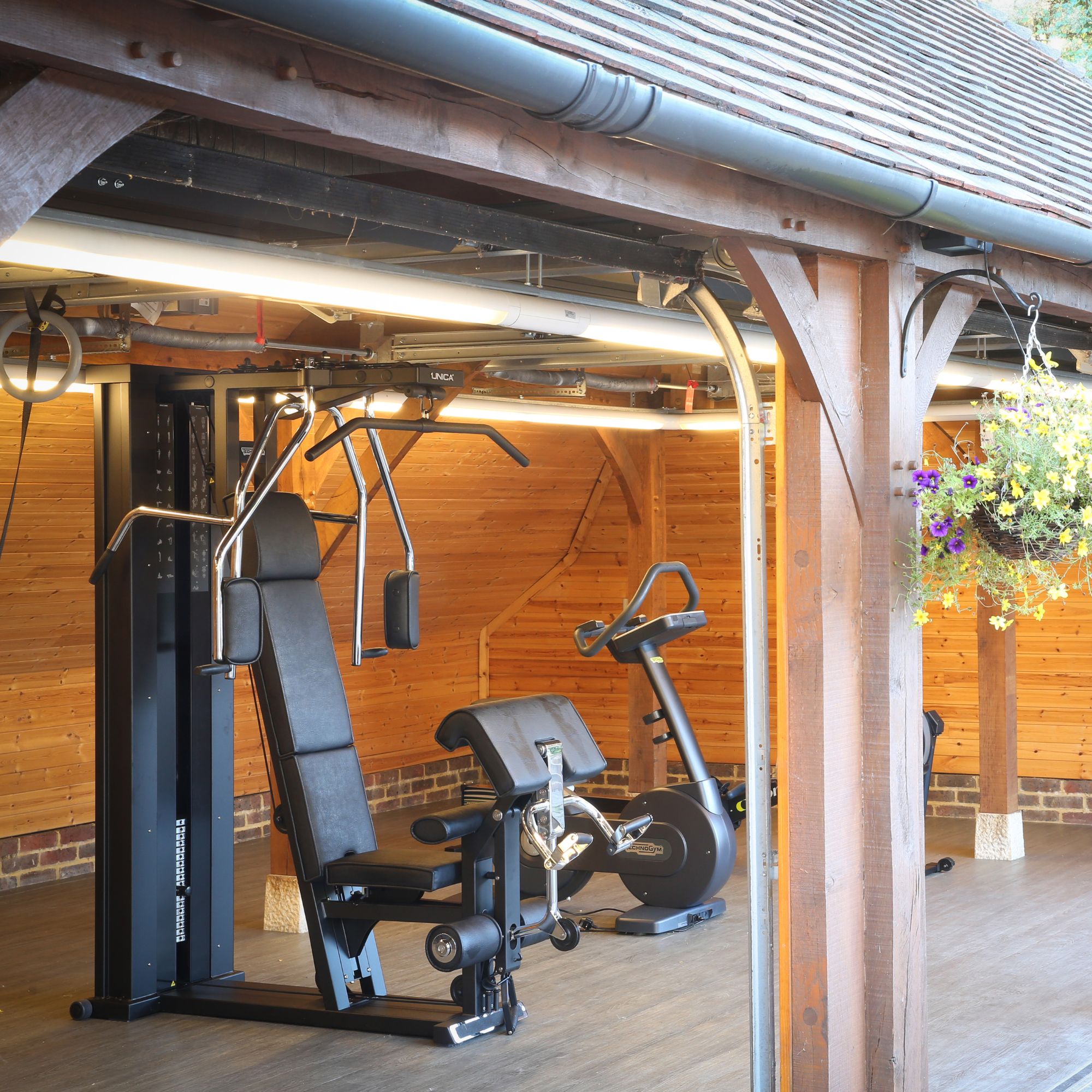Can I convert my garage into a gym? There are 7 rules you need to follow to create the ultimate home workout space
Explore the pros and cons of turning your garage into a home fitness studio, as well as the key rules to follow when you do it


A garage is typically one of the most underused spaces in the home, often becoming a gloomy area to hide household clutter you want to keep out of the way. But can you convert your garage into a gym to make better use of the space?
If you’re looking to maximise the square footage of your property without doing an extension, converting your garage represents a smart way to make the most of the space you already have. And there are loads of garage conversion ideas to help you decide how best to utilise this potential. If your goal is to save time on commuting to the gym, it might be that you’ve already considered transforming your garage into a home exercise suite.
Here, we take a closer look at how to determine whether your garage is a suitable candidate to convert into a home gym, and the key rules to follow to make sure your project is a success.
Can I convert my garage into a gym?

Turning your garage into a gym can be a really good idea if you are keen to get your workouts in at home. 'The ceiling height typically works well for gym equipment and the walls have a good thickness for bolting/attaching equipment,” says Sally Ottewell from Motive8.
However, there are different routes you could take, so you will need to be clear on the rules that apply to each to ensure a successful project.
This largely comes down to understanding the difference between optimising the existing space versus a complete change of use. If you’re optimising the space, essentially, you’re using your existing garage to house your gym equipment.
However, if you’re changing the use of the garage, it means taking away the garage door, adding in brickwork, windows and doors, plastering the walls etc – essentially creating a habitable room similar to the rest of your house. Of course, this type of project requires a lot more time, work and money – and potentially planning permission for the garage conversion, too.
Sign up to our newsletter for style inspiration, real homes, project and garden advice and shopping know-how

Sally specialises in gym and spa design, working across residential, corporate, commercial and specialist projects. Sally consults on gym design, layouts and best of breed equipment selection whilst collaborating with developers, architects, designers and private clients
The beauty with home gyms is that they can fall into either category. For instance, if you’re working with a limited budget and want to go down the DIY route, you might neaten the space up by clearing out old junk, applying panels to the walls and ceiling and put down new floor tiles before moving exercise equipment in.
If you’re doing a full conversion as a means of creating a more luxurious fitness suite, it’ll probably mean installing insulation, re-plastering the walls and ceiling, adding in a heating system, as well as new doors, windows and lighting.
If you’re not making any changes to the exterior of the garage, you can typically do the work under Permitted Development. Changes to the front of your house will increase the likelihood of needing consent. If permission is required, you can maximise your chances of success by keeping the style and materials of your newly converted garage in keeping with the rest of the house. Overlooking is another aspect to consider if you’re keen to install new windows.
'Always check your planning requirements,' says Mark Hood from Resi. If you’re struggling to track down the information you need, contact your local authority for peace of mind before making any changes to your garage. 'Make sure the project complies with building regulations, particularly for fire safety, ventilation and insulation.'

Mark is Director of Architecture at Resi, the UK’s leading home extension platform. With over 9,000 residential projects delivered, Mark’s team of designers has led hundreds of garage conversions nationwide
7 rules to follow when converting a garage into a gym
1. Make sure the structure is sound
'Some garages, particularly in older homes, may have structural issues or weak points,' says Mark from Resi. So, if you want to hang exercise equipment from the ceiling and walls, it might be necessary to appoint a builder or surveyor to assess whether your garage is able to take the load. For heavier items, it’s possible that the walls and ceiling of your garage will need to be reinforced.
2. Have adequate security in place for peace of mind
If your garage is packed with expensive exercise equipment, it’s likely that you’ll want to boost the security and take extra preventative measures to protect yourself from potential intruders. If you’re installing a new garage door, for instance, double check it comes with a ‘Secured by Design’ seal of approval. This police-led initiative aims to design out crime. Items that meet the required criteria have been thoroughly tested to be able to withstand a break-in for a certain amount of time.
You can also explore the options for protecting your space with a smart home security system that links up to your phone, providing you with camera footage of the space and alerts whenever someone opens the door.
3. Choose the right lighting scheme for the space
The right lighting will help you create the right atmosphere for your workout. Incorporate a mix of bright, overhead lights to illuminate the whole space, as well as smaller spotlights for gentler stretching and yoga sessions.
If your budget allows, introducing natural light into your home gym with roof windows can completely change the feel of the space. 'Rooflights work well and are a cost-effective addition, providing natural light which is fantastic for working out,' says Sally. 'If you aren’t keeping the garage opening for extending your workouts outside, a bay window offers more light and a view.'

4. Insulate the space to ensure year-round comfort
Though your garage is a part of your property, it’s worth noting that it’s highly unlikely it’s built the same standards, simply because it’s not intended to be a habitable space. As a result, the garage is very unlikely to be insulated – which could make for a chilly workout!
According to Sally, insulating the garage is not essential if you’re planning to use the space solely as a home gym. 'However, in the winter months it’s an easier workout if there’s some form of heat to motivate you!' she says.
If you’re going down the full conversion route, however, it’s likely you’ll want to improve the thermal performance of the space. Adding insulation boards to the inner face of the walls is one of the easiest ways to do this – but remember this will eat into some of the interior floor space. Choosing a modern garage door with good U-values (a measure of heat loss, where lower numbers are better) is another way of keeping heat inside.
5. Factor in floor protection
A concrete floor is ideal for a home gym, though if your garage has an older timber floor it might not be suitable to support the load of exercise equipment.
Lifting and dropping weights can lead to potential floor damage, so it’s wise to protect your garage floor and provide some cushioning for higher impact exercise. PVC interlocking floor tiles, like this bestselling ComFy Mat gym flooring, £23.95 for 24 square feet, from Amazon, provide one potential solution – always check the units you lay down are non-slip. 'Rubber matting can be relatively inexpensive and a good option to protect the equipment, user and floor,' says Sally.
6. Integrate some noise control into the space
If you’re worried the noise from your workout playlist and exercise equipment will disturb other occupants in the house, acoustic panelling, like this acoustic light oak wood panelling from Wickes (£80 for 22 x 600 x 2400mm panel) can easily be applied to the walls to dampen sound.
Any thermal insulation you install to stud walls, floors and the ceiling will also help to minimise sound from your garage.
7. Don't forget about head height
You can forget about bicep presses if a lack of room overhead prohibits you from reaching your arms up without hitting the ceiling. As a minimum, a ceiling height of 2.2m is ideal.
Should I convert my garage into a gym?

For many people, the prospect of leaving the house and travelling to the gym provides a big enough obstacle to prevent a workout. However, if all you need to do to exercise is open the door to your garage and step inside, one of the biggest barriers to working out is automatically removed.
Not only is this a huge time saver – especially if your commute to the gym is more than 10 minutes each way – but it’ll allow you to save money on gym membership fees, too.
Other advantages are the fact that you can work out in privacy, as well as not having to waste time waiting around for a treadmill to become free when they’re all in use. You’re in charge of what you put in your gym, too, which means you’re only going to install equipment you actually want to use – an important point to bear in mind when you start planning your gym and how you want to maximise the space (why put in a bench press machine if you’re not going to use it?)
On the downside, changing the garage into a home gym inevitably means you’re likely going to lose a substantial amount of storage space, so you’ll need to relocate the bikes, garden furniture and other household paraphernalia that used to live in your garage.
Depending on the exercise equipment you want to install, it’s worth pointing out that some larger pieces of kit can be expensive. Therefore, it’ll take time for the savings you make on gym memberships to offset the initial outlay for equipment.
Space constraints may also make it challenging to install a home gym – in the UK, a single garage typically covers an area around 15m2. This doesn’t mean you won’t be able to fit in a home gym, but you will need to plan the space carefully to make sure you can include all the equipment you want, and there’s enough space to use it properly.
How much is it likely to cost to convert a garage into a gym?
Changing your garage into a home gym could cost anywhere from under £5,000, if you plan on doing a lot of the work yourself, to £20,000 and above for a more luxurious home exercise suite. A lot depends on whether you’re simply cleaning the space up and making a few simple upgrades, to a complete change of use project that requires planning permission and structural work.
While a basic garage conversion costs around £5,000-7,000, this won't include any of your gym equipment, and or any additional structural work (e.g. cutting out new doorways or any reinforcement that may be needed).
If it transpires you actually want to convert your garage into another kind of living space, then these shed gym ideas might give you an alternative solution.

Rebecca Foster started her journalism career in Bangkok in 2013, where she worked on the in-house editorial team at a luxury homes magazine. Since then, Rebecca has contributed to numerous property and interiors titles in the UK and Southeast Asia. She re-located to London in 2015 to work at one of the country’s leading self-build and home renovation magazines. In 2017, she left her job to split her time between freelance journalism and teaching yoga.
You must confirm your public display name before commenting
Please logout and then login again, you will then be prompted to enter your display name.